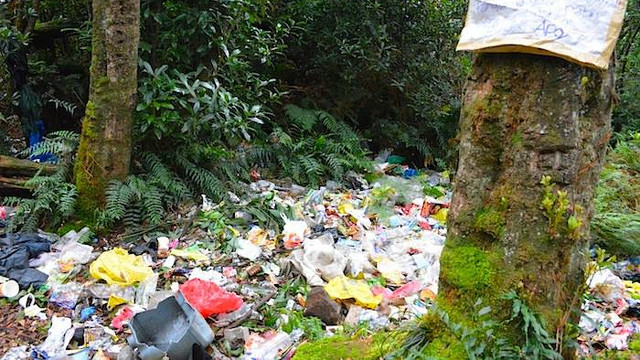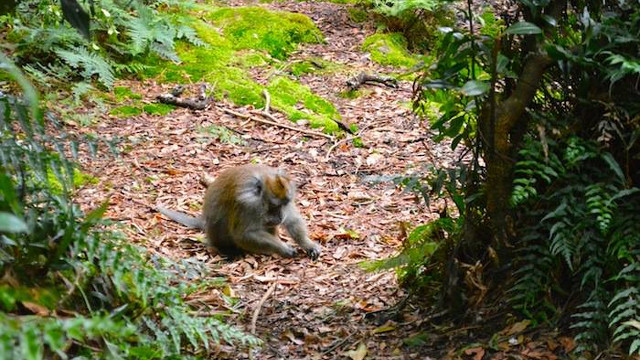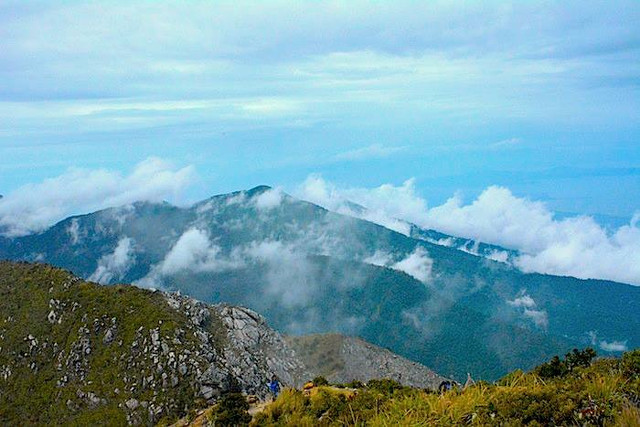SUMMARY
This is AI generated summarization, which may have errors. For context, always refer to the full article.

MANILA, Philippines – Jessie Delos Reyes and his friends were all geared up for the grandeur and back-breaking challenge of climbing Mount Apo, one of the most popular climbing destinations in the country. Wreathed by clouds and mystery, it is famed for the variety of landscapes it offers to the weary climber, from craggy rockscapes near its volcanic peak to virgin forests and sleepy lakes.
But when Delos Reyes finally embarked on their climb in August, he was unprepared for the piles of garbage along the once pristine trails and campsites.
The amount of trash got particularly alarming in Godi-godi campsite where a “no trash” sign made of sack cloth and packing tape futilely warned litterbugs. Noticeable from the heaps of filth were plastic bags, cans, beer and wine bottles.
This is only the most recent report of the trashing of Mt Apo, a national park and protected area under Republic Act 7586 or the National Integrated Protected Areas System (NIPAS) Act of 1992.
Sanctuaries of biodiversity
Protected areas in the country, now numbering 240, are “portions of land and water set aside for their unique physical and biological significance.” NIPAS calls on the Department of Environment and Natural Resources and other concerned government agencies to protect these sanctuaries against destructive human activities and enhance biodiversity.
Standing at 3,143.6 meters above sea level, Mt Apo is the highest mountain in the Philippines and is considered a center of endemism in Mindanao. This means that Mt Apo has the most number of flora and fauna only found in Mindanao. The critically-endangered Philippine Eagle calls the mountain home.

Because of this, Mt Apo endures a staggering number of hikers every year. During the peak season of Lent, when climbing the lofty mountain is done as penance, there are as many as 100 climbers on its trails.
According to DENR Region XI Director Emmanuel Isip, many climbers do not follow the climbers code called Leave No Trace which demands that whatever trash is brought up the mountain must be brought down and disposed of properly.
“Marami sa mga umaakyat ang gahaman. Inaaway pa nila yung mga porter at guide na sinasabihan silang huwag magtapon ng basura,” he bemoaned.
(Many climbers are greedy. They even pick fights with porters and guides who tell them not to throw their trash in the mountain).
But Delos Reyes tells a different story.
“Nakita ng aking mga mata na mismong porter ang nagtatapon ng trail food na isinishare namin sa kanila. Para hindi naman nakakahiya sa kanila, pinupulot na lang namin ang basura na itinapon nila,” he shared.
(I saw with my own eyes the porters throwing the trail food we shared with them. So as not to embarrass them, we just picked up their trash.)

The trash that ends up on the mountain pose serious threats to the animals and plants thriving in the sanctuary. Animals like monkeys and birds can die by ingesting trash often riddled with toxic substances. Plants can get choked by heaps of garbage.
Delos Reyes’ wishlist for Mt Apo is simple: put teeth in the garbage disposal rules and put the P250 environmental fee climbers pay to good use.
An even better approach, he said, would be to ensure forest rangers are always present in campsites to tell off erring climbers. Porters and guides must also be taught Leave No Trace principles.
On the ecotourism trail
Isip assured environmentalists and concerned mountaineers that DENR is on top of Mt Apo’s garbage problem.
On August 6, the DENR announced they would boost conservation efforts in protected areas. These conservation efforts will have a strong ecotourism element to promote the sustainable use of natural resources in these sanctuaries.
“Ecotourism activities properly planned and managed would promote and guarantee the conservation and sustainable use of all biodiversity found within,” said DENR Secretary Ramon Paje.
“It would provide business opportunities for the local community; involve women, children, indigenous peoples and the informal sector…and promote responsible tourism.”
In the case of Mt Apo, Isip said the current system for climbers, porters and guides will be revamped.
DENR, the Department of Tourism and local government units of the provinces surrounding Mt Apo (Davao City, Davao del Sur and Cotabato) are set to devise a community-based eco-tourism plan in which locals living near Mt Apo trails become more involved in Mt Apo’s thriving tourism.
“There are 6 entry points in Mt Apo. We will encourage climbers to hire locals living near these trails as guides and porters. The community at the end of the trail will provide food, refreshment and lodging for the climbers,” explained Isip.

Implementation of the ecotourism plan has already begun.
In April this year, communities on each end of the Sibulan trail started receiving training from DENR and DOT.
The Sibulan trail, which features a river and the 300-foot Tudaya Falls, is bounded by Colan village on one end and Tibolo village on the other.
Locals from Colan are being trained to be guides and porters by the DOT, learning everything from how to read trail signs to how to pitch a tent. DENR meanwhile, provides them with equipment needed for this line of work such as boots, backpacks and tents.
On the other end of the trail, the women of the Tibolo Tribal Women’s Association are being taught culinary and hospitality skills to cater to climbers who wish to rest at the end of the arduous climb.
Climbers pay for the prepared food and the one-night stay in a local’s home.
The locals are also being assisted in the crafting of a community-based business plan, said Isip, to enable them to maximize profits from this potential source of livelihood.
“Most of the locals are farmers. Often, farming cannot provide for all their needs. Ecotourism becomes an alternative source of income.”
The new ecotourism plan is set to be in place in all 6 entry points to Mount Apo by 2014.
But how does this solve the mountain’s garbage problem?
“We are empowering them to become the forest rangers of the mountain. Because their livelihood comes from the mountain, they will feel more responsible for keeping the trails clean,” said Isip.
Because tourism in Mt Apo is driven by the park’s beauty and biodiversity, the locals will now be motivated to keep the park pristine in order to keep the tourists coming in.
This supplements other measures the DENR hopes to implement more effectively: the quarterly clean-up of trails and campsites by forest rangers designated by local government units, the placing of signs along the trail and briefing of climbers before the trek.
But Isip and Delos Reyes agree that the best solution can only be reached when public policy meets private conviction. Effective government programs should be strengthened by private individuals who practice responsible mountaineering. – Rappler.com
Add a comment
How does this make you feel?
There are no comments yet. Add your comment to start the conversation.